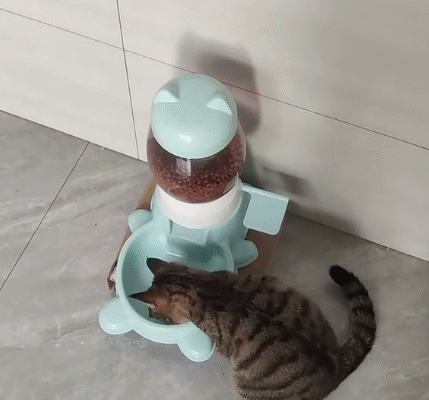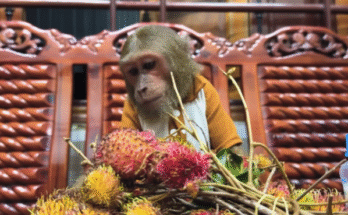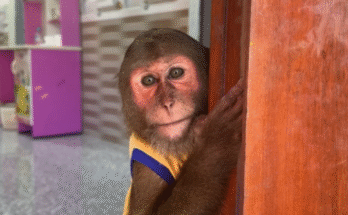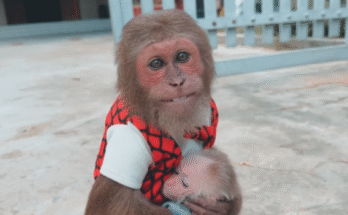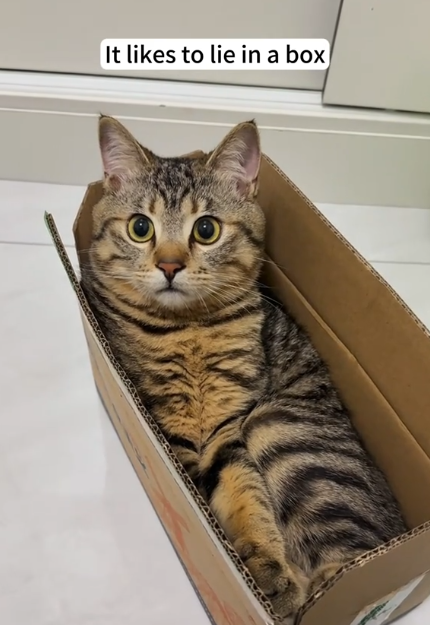
It was an ordinary afternoon when I decided to take a walk around my neighborhood. The sun was shining gently, and a cool breeze rustled through the trees. I often took these quiet strolls to clear my mind and appreciate the little moments of life. But that day, something unexpected happened—something that would stay with me for a long time.
As I wandered down a narrow alley between two old houses, I heard a faint, distressed meowing. At first, I thought it was just the neighborhood cats playing or calling out for attention, but this sound was different. It was urgent and filled with panic. I paused, listening carefully, and then followed the noise.
The meowing grew louder as I approached a small pile of discarded wooden crates stacked haphazardly near the back fence. I crouched down and peered behind the crates. To my surprise, I saw a tiny gray-and-white kitten, no bigger than the palm of my hand. But something was terribly wrong—the kitten’s head was stuck between the slats of the wooden crate, and it was struggling desperately to free itself.
The kitten’s wide, scared eyes met mine, and I could see the panic and helplessness in them. Its little body trembled as it pushed and twisted, trying to pull its head free, but the narrow gap was just too tight. The poor creature was trapped, unable to escape or call for help beyond the faint meows it had already made.
Without hesitation, I carefully reached out my hands. “Hey, little one, I’m here to help,” I whispered softly, trying not to scare the kitten any further. It flinched at first but soon realized I was no threat. I gently examined the situation. The kitten’s head was caught between two closely spaced wooden boards, and its tiny neck was wedged in a way that made movement painful and difficult.
I knew I had to act quickly but carefully. Any sudden moves might hurt the kitten or make it panic even more. I looked around for something to help me widen the gap. There was a small crowbar lying nearby, probably left behind by someone working on repairs. I grabbed it, then sat on the ground beside the crate.
“Hang in there, little one. I’m going to get you out,” I said softly. I wedged the crowbar between the boards and slowly pried them apart just enough to loosen the kitten’s head. The kitten meowed again, this time a bit louder but also relieved. After a few tense moments, I was able to gently pull its head free.
The kitten fell into my hands, panting heavily but free at last. I cradled it close to my chest, feeling its rapid heartbeat and trembling body. “You’re safe now,” I told it, brushing the matted fur from its face. It was clear the kitten had been stuck for some time—the fur around its neck was scraped, and its little face was dirty and tired.
I decided to take the kitten home with me. I wrapped it in a soft towel and walked back through the neighborhood, feeling a strange mixture of relief and responsibility. Who could have left such a fragile creature trapped like that? Was it abandoned, or did it wander into danger on its own?
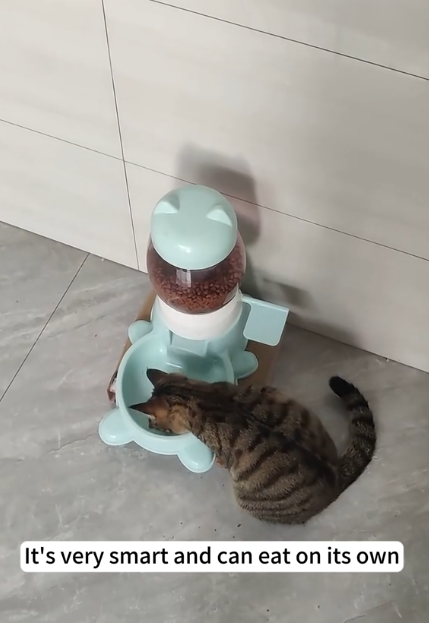
At home, I set up a cozy corner with a warm blanket and a small box. The kitten immediately curled up, exhausted but safe. I fetched a shallow bowl of water and some kitten food, which it lapped up eagerly once it had rested a little. I could see the gratitude in its eyes, even though it was just a tiny ball of fur.
Over the next few days, I cared for the kitten with all the love I could give. I named her “Hope” because that’s exactly what she was—a tiny beacon of hope that things could get better. I cleaned her scrapes and took her to the vet to make sure she was healthy despite the ordeal. The vet confirmed she was malnourished but otherwise okay, given the rough start.
Watching Hope grow stronger each day was one of the most rewarding experiences I’ve ever had. She went from a scared, stuck kitten to a playful, curious little cat who would purr loudly whenever I held her. She became a reminder that sometimes, all anyone needs is a helping hand—or paw—to get through the tough times.
I couldn’t stop thinking about that day in the alley and how close she had come to a much worse fate. If I hadn’t heard her cries, she might have been stuck there for hours or even days. It made me realize how many animals and people around us might be silently struggling, needing someone to notice and care.
Rescuing Hope changed me in unexpected ways. It made me more aware of the vulnerability around us, the fragile lives that often go unseen. It also reminded me of the power of compassion—the simple act of reaching out to help, even when the situation seems small or insignificant.
I started volunteering at the local animal shelter, determined to do more for abandoned and injured animals. Hope’s rescue was the spark that ignited a passion in me to be a protector and caregiver. She wasn’t just a kitten stuck in a crate; she was a symbol of resilience, trust, and the healing power of kindness.
Every now and then, I take Hope back to the alley where I found her. She explores it cautiously but confidently now, sniffing around the same crates that once trapped her. It’s as if she knows she’s free and safe because of that moment when someone stopped to listen to her cries.
If you ever hear a tiny voice of distress—whether from a kitten, a person, or anything living—please don’t ignore it. Sometimes, the smallest rescue can change a life forever. Hope’s story is proof of that.
